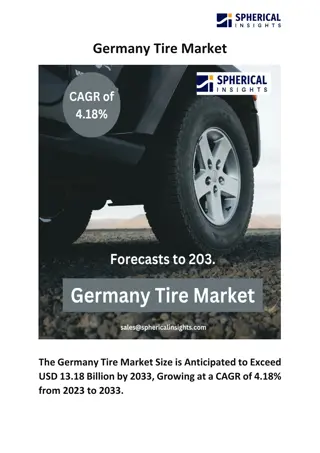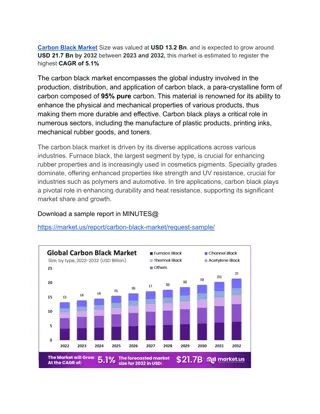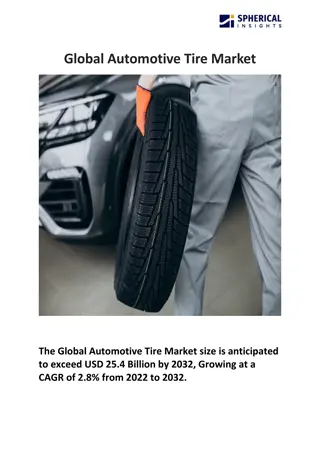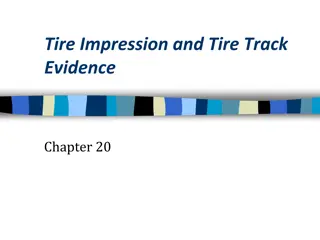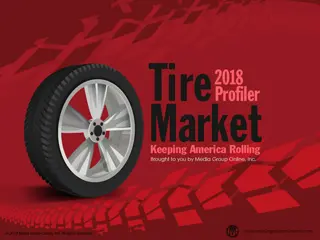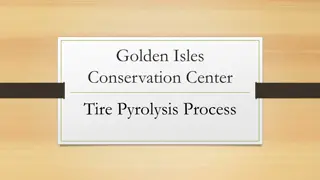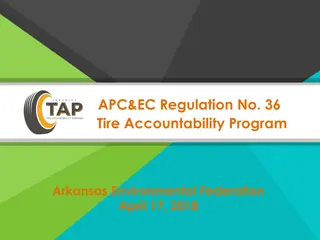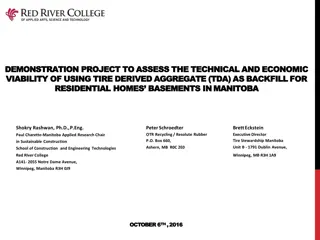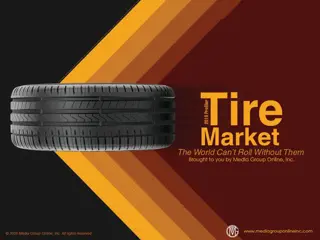Insights on the Tire Market: Trends, Challenges, and Opportunities
Despite the challenges faced in 2020 due to the pandemic, the tire market showed resilience, with a slight decrease in sales but positive margins for independent tire dealers. In 2021, as Americans returned to work and travel increased, the market saw a resurgence, with a rise in sales at automotive parts and tire stores. However, independent dealers faced supply chain congestion issues, impacting their unit sales and costs. Road travel also saw fluctuations, influenced by the pandemic's ebb and flow. Insights from the Hankook Tires Gauge Index highlighted shifting driving habits among Americans.
Download Presentation

Please find below an Image/Link to download the presentation.
The content on the website is provided AS IS for your information and personal use only. It may not be sold, licensed, or shared on other websites without obtaining consent from the author. Download presentation by click this link. If you encounter any issues during the download, it is possible that the publisher has removed the file from their server.
E N D
Presentation Transcript
2020 Was Bad and Not So Bad With an unprecedented number of Americans staying at home and businesses closed, the 9.2% decrease in US replacement passenger tire sales ($28.2 billion to $25.6 billion) was a better performance than many other consumer products and services sectors. Although a much smaller segment ($5.4 billion total 2020 sales), sales of light-truck replacement tires decreased 5.2% and the slightly larger commercial truck segment ($6.7 billion) decreased 2.9%. Although independent tire dealers margins decreased in all categories, the declines were minimal: passenger retail from 30.0% (2019) to 28.8% (2020) and light truck retail from 25.3% to 24.4% while medium truck retail increased slightly from 15.4% to 15.6%.
2021 Tire Market Overview Despite the surge of the Delta variant, more Americans were returning to work, traveling and using their vehicles, which caused an increase of miles driven during recent months, compelling more vehicle owners to buy more automotive parts, accessories and tires. According to US Census Bureau data, sales at automotive parts, accessories and tire stores (NAICS 4413) during the first half of 2021 increased 14.3% compared to the first half of 2020 and 11.3% compared to the first half of 2019. A report from GfK and the Tire Industry Association stated independent tire dealers suffered less than big-box retailers as the independents increased their market share after losing share during 2016, 2017 and 2018.
Shops Hit Hard with Supply-Chain Congestion Independent tire dealers across America have experienced problems with their supply chains since the beginning of the pandemic. They have been victims of the short supply of shipping containers negatively affecting almost all other consumer sectors. According to the November 2021 issue of Modern Tire Dealer, independent dealers September unit sales increased 3% to 8%; however, the cost of the raw materials required to manufacture one conventional replacement tire increased 23.7% YOY. IMR, Inc., a market research company, interviewed 500 independently owned automotive repair shops, and although there are delays in receiving parts, accessories and tires, 87.8% of those independent shops said they hadn t changed their suppliers.
Road Travel Increases With many workers staying at home during Q2 2020, road travel decreased an average of 26.1% YOY for April, May and June 2020, after having decreased less during January 2021 (-11.3% YOY) and February 2021 (-12.1% YOY.) Although signs the pandemic was waning during Q2 2021 proved to be premature, total vehicle miles increased an average of 32.9% YOY, with a 54.6% increase during April. People began to return to their jobs, shopped more in stores and escaped to the outdoors. By mid-summer 2021, however, the Delta variant of the COVID-19 virus had become prevalent, causing total vehicle miles to increase much less: July +11.6% YOY and August +8.3 YOY and vehicle owners delaying repairs and tire purchases.
More Driving Insights The Hankook Tires September 2021 Gauge Index reported 54% of Americans expected to return to their pre-pandemic driving levels by fall 2021; however, only 36% were driving every day during September 2021, compared to 61% during September 2020. With the new school year in session, parents with children were more likely to drive more than 200 miles weekly and 22% said they are driving their children to school more often. Data from five representative 2021 market/surveys conducted by The Media Audit reveals the largest percentages of adults 18+ who were working from home at least some portions of their workweek were also high- mileage drivers (350 or more miles weekly).
Vehicle Owners Know What Tire Brands Are Best The J.D. Power 2021 U.S. Original Equipment Tire Customer Satisfaction StudySMfound surveyed consumers drove 13% fewer miles during 2020, as many postponed medical appointments and regular vehicle checkups. Although more people were working from home, their vehicles tires still required maintenance or replacement, but many delayed these typical repairs during 2020. The study s author recommended tire manufacturers design visible signals to notify owners when it s time to visit a dealer for replacement tires, which will likely result in increased sales for dealers.
Advertising Strategies Consider creating a special offer on a set of tires or vehicle maintenance through local businesses as a perk for their employees when they begin to commute to work regularly and could be used to incentivize employees to return. A TV campaign will provide the reach to direct viewers to a direct mail piece arriving in their mailbox with information about tire wear and other tire-maintenance tips and including a limited-time coupon. Direct mail is effective in reaching Millennials. Promote early, pre-ordering of tires because of the supply- chain challenges the industry is experiencing. Offer a discount to customers who are willing to wait three months or even six months for their tires to arrive and be installed.
New Media Strategies Local tire stores can establish more trust and transparency with local customers by providing regular information on social media about supply chain issues, including customer order delays, limited inventory of favorite brands. Any service business, such as tire dealers, can benefit from a series of short videos from each technician, which creates a connection with consumers and customers before their appointment. Each technician can also share a tip to help customers tires last longer. Use social media to share information about local day trips to interesting sites, less-known hiking and biking trails and other attractions to motivate people to drive more and experience what s great about their community.








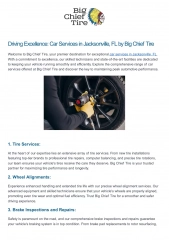
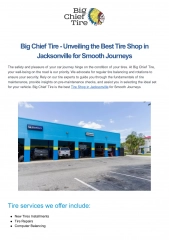
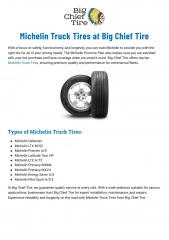
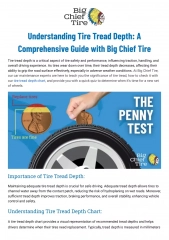


![Tire Recycling Market Size, Share & Trends [2032 Report]](/thumb/109036/tire-recycling-market-size-share-trends-2032-report.jpg)
